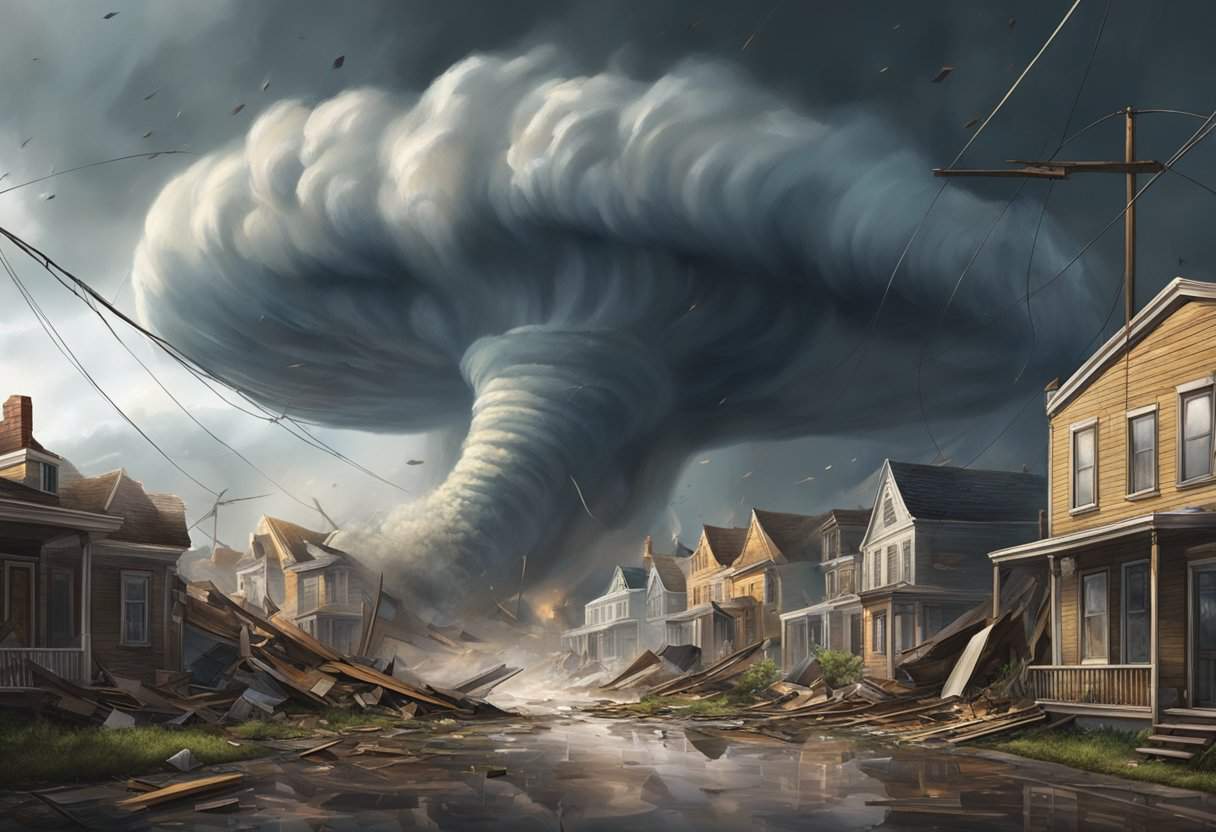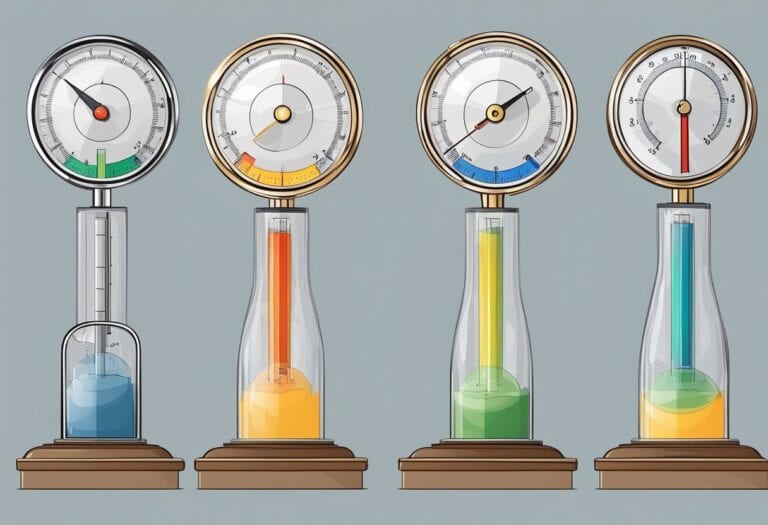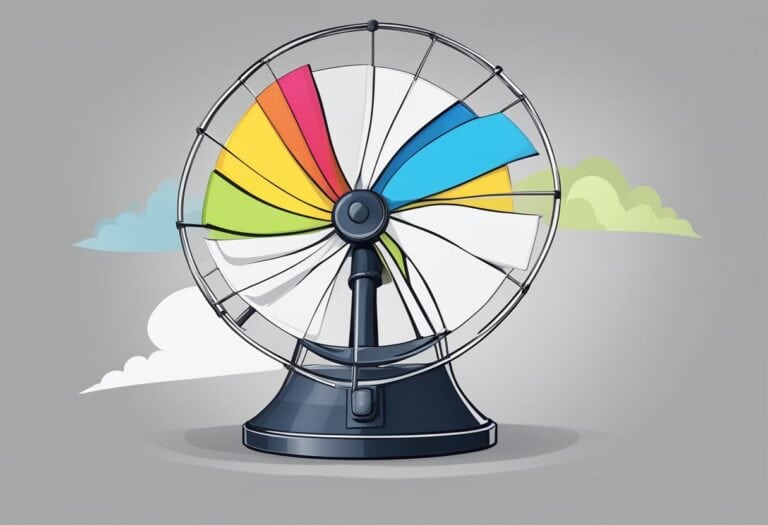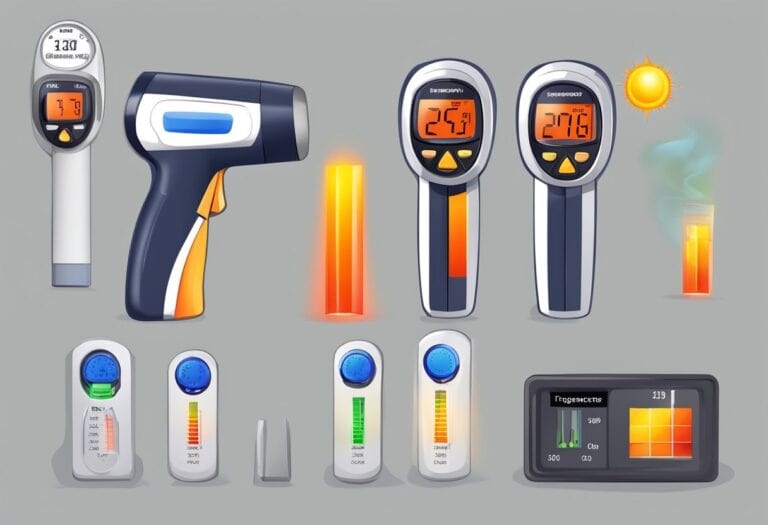Tornadoes are among the most violent and unpredictable natural disasters known to occur in the United States, a country that leads the world in the frequency of tornado occurrences.
From the vast plains of the Midwest to the southern states, these ferocious storms have carved their mark into American history through both the landscape and the memory of those who’ve witnessed their power. Understanding the nature of the worst tornadoes that have stricken the nation involves a glimpse into past events, the science behind their formation, and their classification based on intensity and damage caused.
The United States has experienced numerous devastating tornadoes, some of which have stood out for their severity and the loss they have imposed. Historical accounts and scientific studies provide insights into the patterns, both geographical and seasonal, of tornado occurrences.
The intricate dynamics of tornado formation, which depend on specific atmospheric conditions, also determine the potential scale and impact of these natural phenomena.
Tornadoes are common in US, especially in Tornado Alley (Great Plains) and Dixie Alley (southeast). They cause severe damage and are most frequent in spring and winter. The deadliest was the 1925 Tri-State Tornado (695 deaths). Knowing tornado patterns helps preparedness.
Historical Overview of Tornadoes in the United States
The United States has experienced numerous devastating tornadoes throughout its history, with some being recorded as the deadliest. Your understanding of these events is crucial in grasping the impact tornadoes have had on the nation.
The Tri-State Tornado of 1925
March 18, 1925, marks the date of the Tri-State Tornado, the deadliest tornado in US history. This catastrophic event traversed through Missouri, Illinois, and Indiana, leaving a path of utter destruction. The tornado resulted in over 695 deaths, highlighting the significant danger tornadoes pose.
Other Notable Tornadoes in US History
In addition to the Tri-State Tornado, several other tornadoes have left deep scars on the fabric of American history:
- The Natchez Tornado: Occurring on May 7, 1840, this tornado struck Natchez, Mississippi, causing over 317 fatalities and becoming one of the second deadliest tornado in US history.
- The St. Louis Tornado: On May 27, 1896, St. Louis, Missouri, was struck by a violent tornado, which resulted in approximately 255 deaths and extensive damage.
- The Tupelo, Mississippi Tornado: A part of the lethal outbreak of tornadoes in April 1936 that also affected Gainesville, this tornado caused 216 deaths and massive destruction.
- The Gainesville Tornado: On April 6, 1936, Gainesville, Georgia was devastated by a tornado that led to more than 200 deaths, making it one of the deadliest in US history.
- The New Richmond Tornado: New Richmond, Wisconsin faced a tremendous tragedy on June 12, 1899, when a tornado claimed 117 lives.
Your awareness of these significant historical events can broaden your understanding of tornadoes and their impact on the United States.
Tornado Formation and Classification
Understanding how tornadoes form and are classified is crucial for grasping their potential impact. Tornadoes are complex natural events influenced by environmental factors and can be categorized by the intensity of the damage they cause.
The Science of Tornado Formation
Tornadoes are the result of particularly violent thunderstorms and specific atmospheric conditions. They form when warm, moist air collides with cool, dry air. This clash of air masses, along with winds that change speed or direction with height (known as wind shear), creates a rotating effect. The National Weather Service (NWS), a part of NOAA, is responsible for monitoring these severe thunderstorms and issuing tornado warnings.
Severe thunderstorms can lead to the development of a supercell, a type of storm with a deep rotating updraft known as a mesocyclone. It’s within these supercells that most tornadoes in the United States originate. These extreme weather events are rapid, unexpected, and can cause significant environmental turmoil. The rotation may start several kilometers above Earth’s surface, and as it extends downwards, it can form a visible funnel. If this funnel touches the ground, it officially becomes a tornado.
Fujita Scale and Enhanced Fujita Scale
The Fujita Scale, developed by Dr. Tetsuya Theodore Fujita in 1971, is used to classify tornadoes based on the damage they inflict, which is linked to their wind speed. This scale ranges from F0, which denotes light damage, to an F5 tornado, indicative of incredible destruction. In 2007, the Enhanced Fujita Scale (EF Scale) was adopted, providing a more detailed method that assesses damage across 28 different types of structures and vegetation.
- EF0 – Minor damage with wind speeds between 65-85 mph.
- EF1 – Moderate damage and winds between 86-110 mph.
- EF2 – Considerable damage; winds range from 111-135 mph.
- EF3 – Severe damage with winds from 136-165 mph.
- EF4 – Devastating damage; wind speeds are between 166-200 mph.
- EF5 tornado – Incredible damage with wind speeds over 200 mph.
Sometimes, during a particularly violent weather event, multiple tornadoes can develop, resulting in a tornado outbreak. Whether an F5 or an EF5 tornado, these represent the highest intensity on their respective scales and are capable of destroying well-made structures, hurling vehicles, and stripping trees completely.
Each scale reflects the potential for significant impacts on life and property, thereby guiding the NWS in communicating the urgency during tornado outbreaks and aiding in post-storm assessments which frequently feed into severe weather research and prediction improvements.
Regional and Seasonal Patterns of Tornado Occurrences
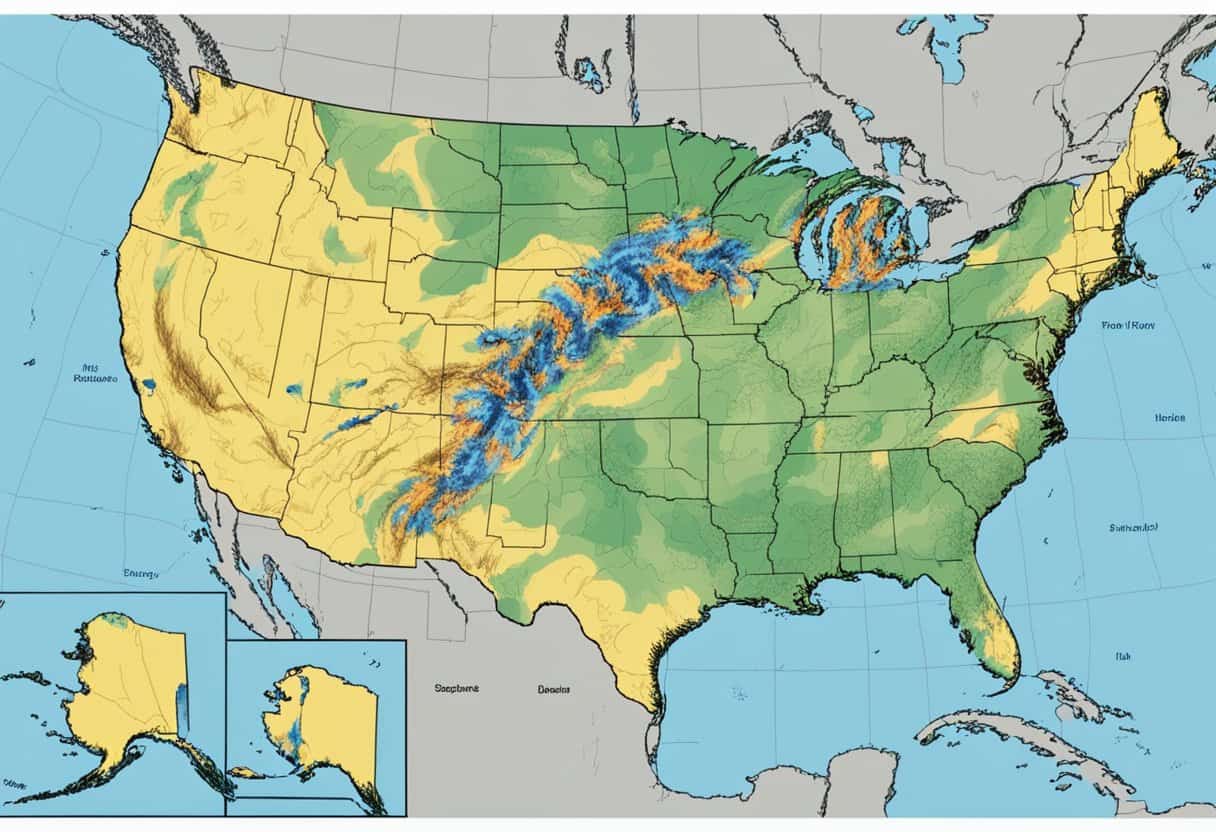
Understanding where and when tornadoes are likely to occur can provide you with crucial insights into the nature of these destructive weather events. This section will present specific information on the regional hotspots known as Tornado Alley and Dixie Alley, the notable seasonal timing patterns of tornado occurrences, and their varied impacts across different states.
Tornado Alley and Dixie Alley
Tornado Alley encompasses the Great Plains states, such as Kansas, Oklahoma, and Texas, which are notorious for high tornado activity, particularly in the spring. This area experiences a confluence of cold, dry air from Canada, warm dry air from the Southwest, and warm, moist air from the Gulf of Mexico, creating ideal conditions for tornado formation.
In contrast, Dixie Alley includes parts of the Mississippi Valley and the southeast states like Tennessee, Alabama, and Georgia. Tornadoes here can be especially dangerous due to higher population densities and a tendency for tornadoes to occur at night.
Seasonal Variations and Tornado Timings
Tornado occurrences have distinct seasonal patterns. The peak month for tornadoes in Tornado Alley is May, whereas Dixie Alley can experience a heightened risk as early as March through May, and a secondary peak in November.
- Spring: High incidence of tornadoes in the Midwest, with May being the most active month.
- Winter: December sees a spike in tornado activity in the southeast, including states like Tennessee and Alabama.
Tornado timings can also vary regionally. For instance, Kansas typically experiences tornado occurrences in the late afternoon, while in Dixie Alley, they are more frequent during the night.
Impact Across States
The impact of tornadoes can be devastating, with some states bearing the brunt more than others. Georgia’s Gainesville was the site of one of the deadliest tornadoes in U.S. history, and Kansas, located in the heart of Tornado Alley, routinely faces significant tornado threats each year.
- In the Southeast, states like Alabama and Georgia often face intense tornadoes spawned from complex storm systems.
- Ohio, Kentucky, and Arkansas also report numerous tornado events, reflecting the broad reach and high variability of tornado-prone areas in the United States.
Frequently Asked Questions
When exploring the history of tornadoes in the United States, it’s critical to recognize those that stand out for their intensity, destruction, and loss of life. The following frequently asked questions will provide you with insights into some of the most significant tornado events in American history.
What are the deadliest tornadoes to have occurred in the United States?
The deadliest tornadoes include the 1925 Tri-State Tornado with 695 deaths, the 1840 Great Natchez Tornado, and the 1899 New Richmond Tornado. These events are grim reminders of the potential lethality of tornadoes.
How does the Tri-State tornado rank among the worst tornadoes in US history?
The Tri-State Tornado holds the record for the deadliest tornado in U.S. history. It traversed Missouri, Illinois, and Indiana on March 18, 1925, and is also known for the longest path length of any tornado at 219 miles.
Can you list the top 5 states that have experienced the most severe tornadoes?
States that frequently experience severe tornadoes include Texas, Kansas, Oklahoma, Florida, and Nebraska. These regions are part of “Tornado Alley” known for their high tornado occurrence.
What is the record for the largest tornado ever recorded in the United States?
The record for the largest tornado in the United States goes to the El Reno, Oklahoma tornado on May 31, 2013, which reached an unprecedented width of 2.6 miles.
Has an F6 tornado ever been confirmed to have occurred?
No, an F6 tornado has never been confirmed. The Fujita scale, which measures tornado intensity, only goes up to F5, indicating incredible damage. F6 would be beyond the scale, and that level has not been scientifically recognized.
Which tornadoes are considered the most infamous in American history?
Tornadoes like the 2011 Joplin Tornado, 1999 Bridge Creek–Moore Tornado, and the 1974 Super Outbreak tornadoes are among the most infamous in American history due to their extreme destruction and impact on communities.

